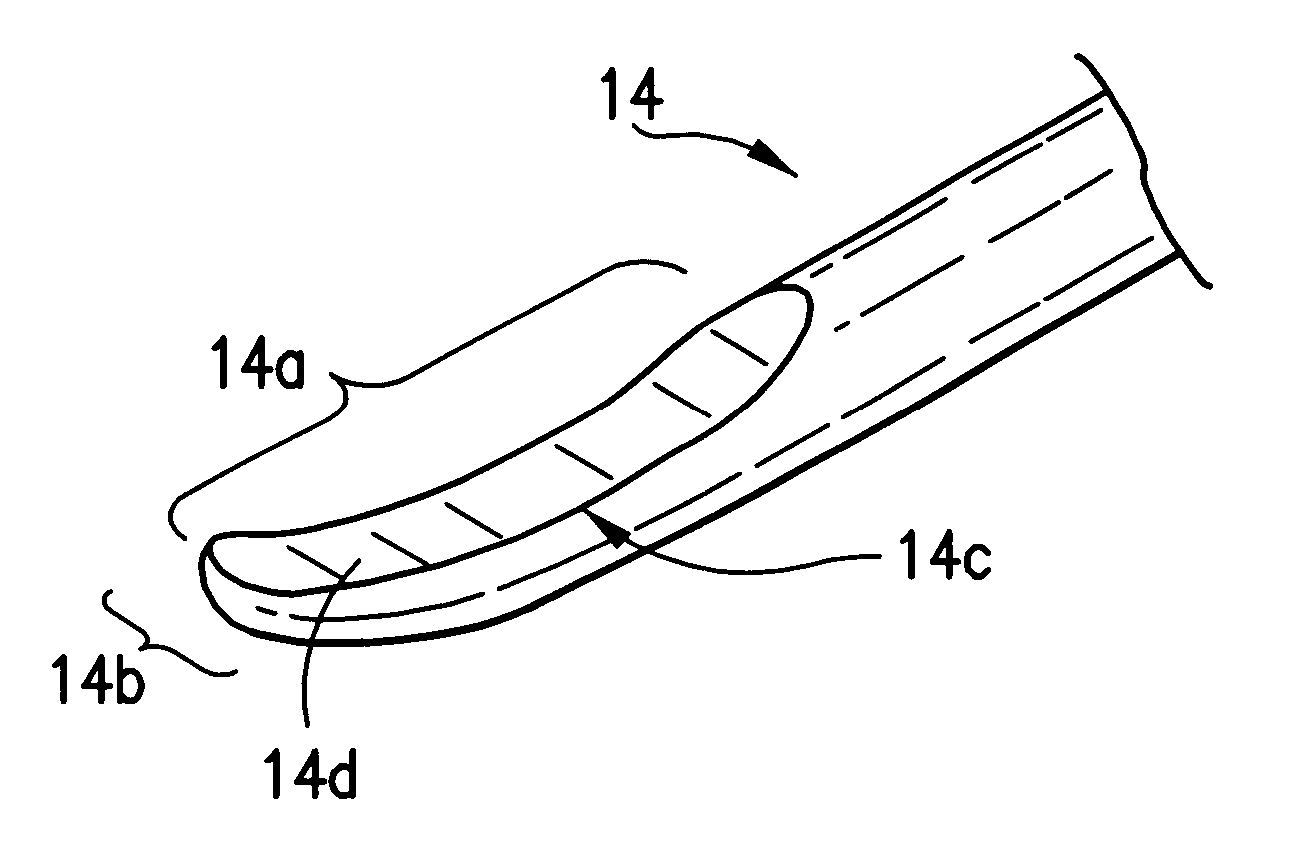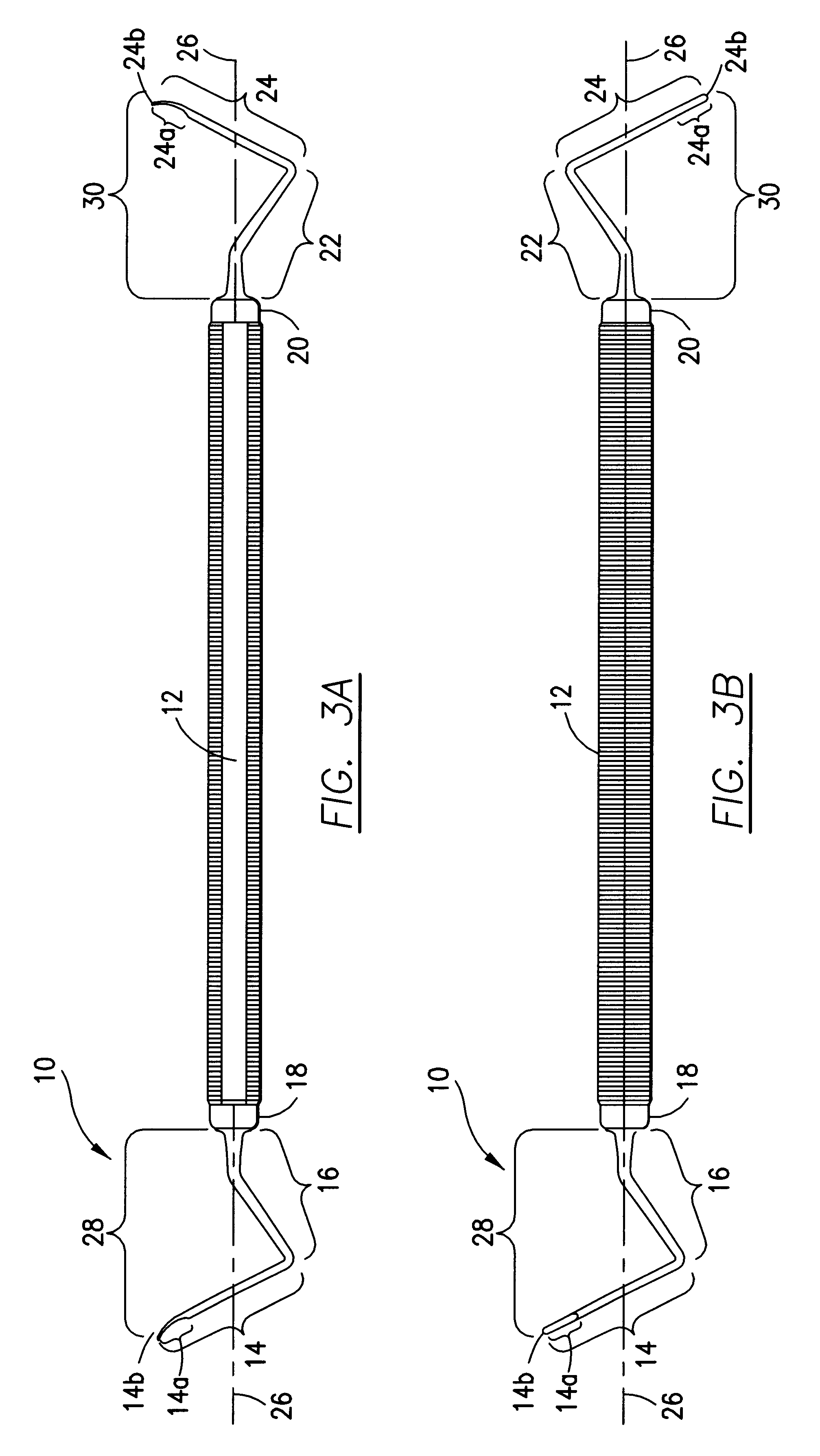Curette for deep pocket periodontal curettage
a deep pocket periodontal and cuttage technology, applied in the field of dental tools, can solve the problems of manual positioning and movement of the curtiss, the difficulty the use of each specific curtiss, etc., and achieve the effect of removing debris from the bottom area of deep periodontal pockets, scraping, cutting, spooning, and scraping with prior art instruments
- Summary
- Abstract
- Description
- Claims
- Application Information
AI Technical Summary
Benefits of technology
Problems solved by technology
Method used
Image
Examples
Embodiment Construction
Referring now to the drawings, and in particular, FIG. 1A, the invention is shown generally at 10, incorporated onto a surgical instrument, having an elongated, rigid cylindrical shaft 12 having a longitudinal axis 26 and terminating at shaft end 18. Shank 28 extends from the shaft end 18. Shank 28 further comprises a proximal shank portion 16 and a distal shank portion 14 terminating in a spoon-shaped blade 14a used in periodontal. surgical curettage. The proximal portion 16 is attached to the rigid cylindrical shaft surface area 12a that functions as a manual grasping handle. The shaft surface area 12a may be irregularly formed by grooves, ridges, or other friction or grip enhancing texture for better manual grasping.
Thus, as seen in FIG. 1A, the distal portion 14 is preferably configured at about a 90 degree angle to the proximal portion 16 for maximum angular maneuverability around the perimeter of the tooth and between the gum and tooth. Other angular configurations substantial...
PUM
 Login to View More
Login to View More Abstract
Description
Claims
Application Information
 Login to View More
Login to View More - R&D
- Intellectual Property
- Life Sciences
- Materials
- Tech Scout
- Unparalleled Data Quality
- Higher Quality Content
- 60% Fewer Hallucinations
Browse by: Latest US Patents, China's latest patents, Technical Efficacy Thesaurus, Application Domain, Technology Topic, Popular Technical Reports.
© 2025 PatSnap. All rights reserved.Legal|Privacy policy|Modern Slavery Act Transparency Statement|Sitemap|About US| Contact US: help@patsnap.com



